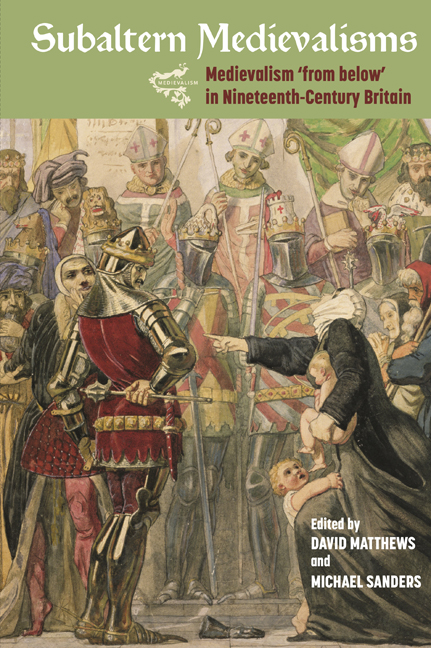Book contents
7 - The Cause of Liberty: Ford Madox Brown, Augustus Welby Pugin and Victorian Medievalism
Published online by Cambridge University Press: 09 February 2021
Summary
EARLY AND MID-VICTORIAN medievalism is larger than the workings of any one form of thought in the visual arts. It appears in different shapes and guises and is given different critical attributes and characteristics at specific points on the politico-cultural spectrum. At one end of this spectrum, in the High Tory revivalism of Daniel Maclise's Sir Francis Sykes and His Family (1837), medievalism signals the longing for an imagined history filtered by myths of ancient manners and chivalric customs, a version of culture and society as festivity which Sykes tried to propagate at the Eglinton Tournament, the vast (and hugely expensive) pageant, joust and revel organised in 1839. Somewhere near the middle of this spectrum, medievalism relates to the critical idiom of Whig historicism as deployed by the Fine Art Commission, established in 1841, to oversee the ambitious scheme to decorate the new Houses of Parliament (1843–45). The commissioners, whose proclamations were coloured by Henry Hallam's influential The State of Europe during the Middle Ages (1818) and The Constitutional History of England (1827), subscribed to the view that public art should indicate an awareness of the connection between medieval institutions and the emergence of constitutional government. At the oth er end of this spectrum, medievalism refers to a range of practices, for the most part by younger artists and designers, where it is identified as part of a process of critical resistance to modernity, and the governmental and commercial systems with which it was associated. This third type of medievalism was polemical as it offered the opportunity of concentrating on the articulation of the social order from below, as is the case in Ruskin's well-known ruminations on the expressive value of work conducted by medieval stonemasons, which reached its crescendo in the multi-volume The Stones of Venice (1851–53).
This chapter is organised around the polemical strand of thought noted above. This is done in the conviction that the polemical attitude has far-reaching implications for our current understanding of the relations of Victorian visual culture with wider cultural and political practices in the middle decades of the nineteenth century.
- Type
- Chapter
- Information
- Subaltern MedievalismsMedievalism 'from below' in Nineteenth-Century Britain, pp. 127 - 142Publisher: Boydell & BrewerPrint publication year: 2021



